Books
Books

Disobedience
Structured as a long series of interconnected poems in which one of the main elements is an ongoing dialogue with a seedy detective, Disobedience sets out to explore the visible as well as the unconscious. These poems, composed during a fifteen-month period, also deal with being a woman in France, with turning fifty, and with being a poet, and thus seemingly despised or at least ignored.
Alice Notley has earned a reputation as one of the most challenging and engaging radical female poets at work today. Her last collection, Mysteries of Small Houses, was a finalist for both the Pulitzer Prize in poetry and the Los Angeles Times Book Prize.

Whites, Jews, and Us: Toward a Politics of Revolutionary Love
A scathing critique of the Left from an indigenous anti-colonial perspective.
With Whites, Jews, and Us, Houria Bouteldja launches a scathing critique of the European Left from an indigenous anti-colonial perspective, reflecting on Frantz Fanon's political legacy, the republican pact, the Shoah, the creation of Israel, feminism, and the fate of postcolonial immigration in the West in the age of rising anti-immigrant populism. Drawing upon such prominent voices as James Baldwin, Malcolm X, and Jean Genet, she issues a polemical call for a militant anti-racism grounded in the concept of revolutionary love.
Such love will not come without significant discomfort for whites, and without necessary provocation. Bouteldja challenges widespread assumptions among the Left in the United States and Europe—that anti-Semitism plays any role in Arab-Israeli conflicts, for example, or that philo-Semitism doesn't in itself embody an oppressive position; that feminism or postcolonialist theory is free of colonialism; that integrationalism is a solution rather than a problem; that humanism can be against racism when its very function is to support the political-ideological apparatus that Bouteldja names the "white immune system."
At this transitional moment in the history of the West—which is to say, at the moment of its decline—Bouteldja offers a call for political unity that demands the recognition that whiteness is not a genetic question: it is a matter of power, and it is high time to dismantle it.
"Why am I writing this book? Because I share Gramsci's anxiety: "The old are dying and the new cannot be born; in this interregnum a great variety of morbid symptoms appear." The fascist monster, born in the entrails of Western modernity. Of course, the West is not what it used to be. Hence my question: what can we offer white people in exchange for their decline and for the wars that will ensue? There is only one answer: peace. There is only one way: revolutionary love." — from Whites, Jews, and Us
This Semiotext(e)/Intervention series English-language edition includes a foreword by Cornel West.
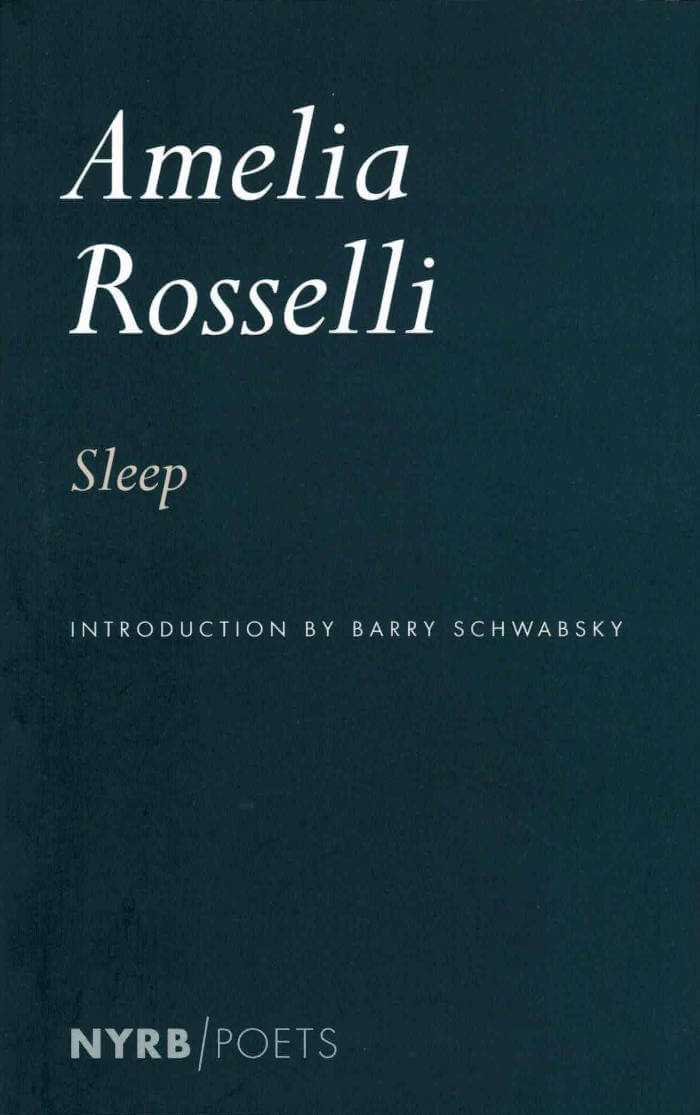
Sleep
A major, career-spanning collection of an Italian master's poetry in English, gathered together for the first time.
Amelia Rosselli is one of the great poets of postwar Italy. She was also a musician and musicologist, close to John Cage and Karlheinz Stockhausen, and she waged a lifelong battle against depression. The child of Carlo Rosselli, a significant anti-fascist intellectual who was assassinated with his brother Nello in 1937, Amelia grew up in exile and attended high school in Mamaroneck, New York. English poetry, especially the lyrics and sonnets of Shakespeare and the Elizabethans, became a prime reference for her own poetry, which combines modernist experimentation with variations on more traditional forms.
The elaborate, archaic, yet thoroughly modern poems, at once stumbling and singing, that Rosselli composed in English and gathered under the title Sleep are a beautiful and illuminating part of her work. Six of the poems were published by John Ashbery in the 1960s but have otherwise been unavailable to English readers. They are published here for the first time outside of Italy.

Nicolas Pages
An ode to mad love, awarded the Prix de Flore in 1999.
Published in 1999 and awarded that year's Prix de Flore, Nicolas Pages marks a departure from the Sadean preoccupations of Guillaume Dustan's first three novels; it is, in essence, a love story. Inspired by a failed romance with the Swiss artist-writer Nicolas Pages and collaging texts that Dustan initially produced for a wide variety of other occasions (magazine articles, short stories, project notes, shopping lists, and more), the "auto-/bio-/porno-graphic" prose of Nicolas Pages is by turns trashy and encyclopedic, corporeal and philosophical. Here Dustan inaugurates a "gay literature" that is no longer painful or shameful, but epicurean and cheerful without ever lapsing into idealism. A vibrant plea for gay rights and a tapestried text that is more than the sum of its many styles, Nicolas Pages is a call to explore the body, sexuality, and writing in all their variety; it is a hymn to life, humanity, pleasure, and desire.
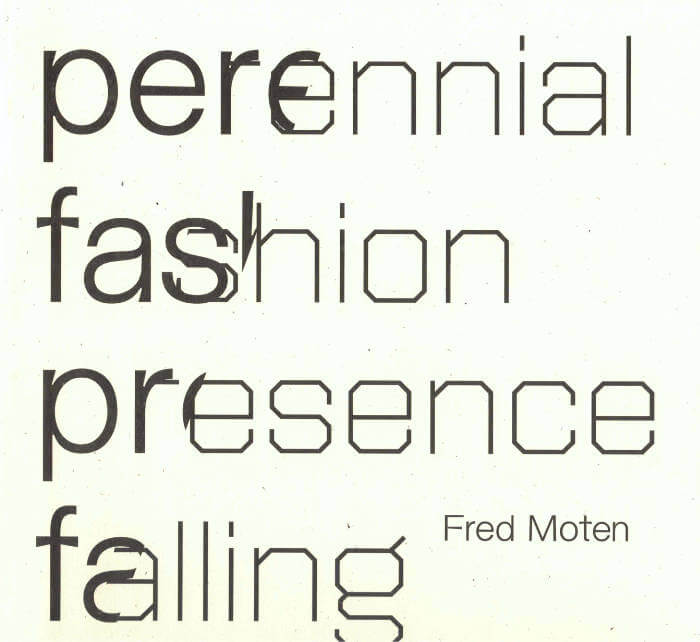
Perennial Fashion Presence Falling
Latest poetry collection from poet, critic, theorist, and MacArthur fellow and Guggenheim Fellow, Fred Moten.
"...some ekphrastic evening, this'll be both criticism and poetry and failing that fall somewhere that seems like in between."
So writes poet, critic, theorist, and MacArthur fellow Fred Moten in his latest poetry collection PERENNIAL FASHION PRESENCE FALLING. Much like the poems found in The Feel Trio (Letter Machine 2014), which was a National Book Award finalist, and All That Beauty (Letter Machine, 2019), the poems here present Moten's "shaped prose" on the page and the dizzying brilliance of both polyphonies and paronomasia. Within this collection, the poems hold an innate quantum curiosity about the infinitude of the present and the ways in which one could observe the history of the future. Poems beget poems, overflowing and flowering, urging deeper etymological investigations. In perennial fashion presence falling, Moten approaches the sublime, relishing that intermediary space of microtonal thought.
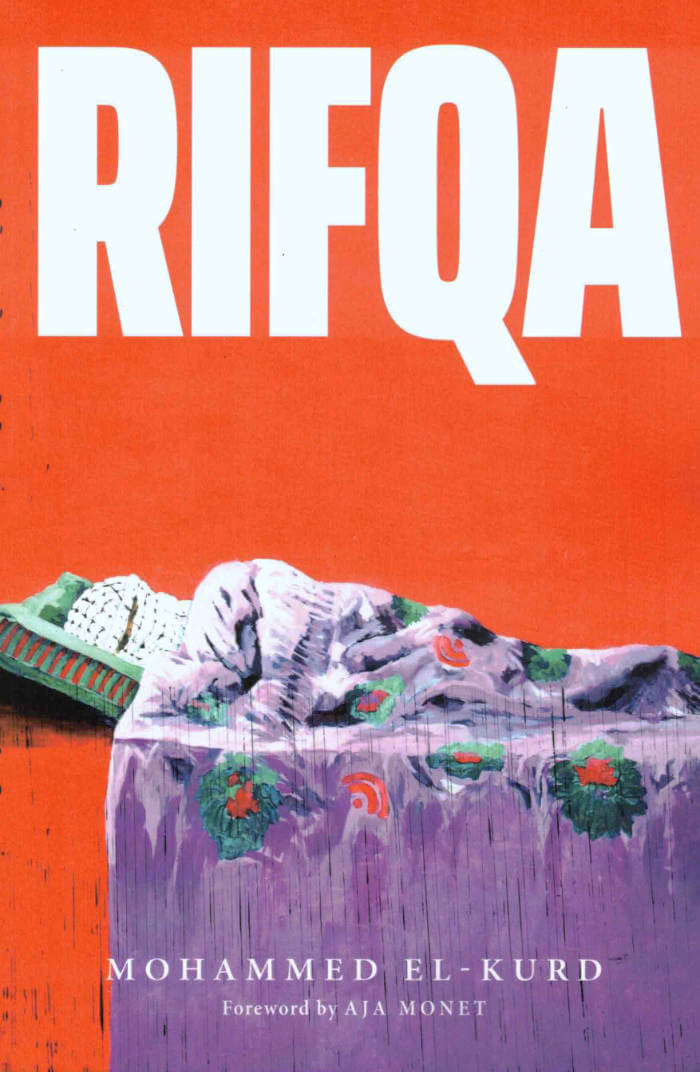
Rifqa
Rifqa is Mohammed El-Kurd’s debut collection of poetry, written in the tradition of Ghassan Kanfani’s Palestinian Resistance Literature. The book narrates the author’s own experience of dispossession in Sheikh Jarrah—an infamous neighborhood in Jerusalem, Palestine, whose population of refugees continues to live on the brink of homelessness at the hands of the Israeli government and US-based settler organizations. The book, named after the author’s late grandmother who was forced to flee from Haifa upon the genocidal establishment of Israel, makes the observation that home takeovers and demolitions across historical Palestine are not reminiscent of 1948 Nakba, but are in fact a continuation of it: a legalized, ideologically-driven practice of ethnic cleansing.
Mohammed El-Kurd is a Palestinian writer and poet from Sheikh Jarrah in East Jerusalem. He was pursuing a Master's in the United States before returning to Sheikh Jarrah to protest the ethnic cleansing of his family. He has gained prominence for his description of Israeli occupation as apartheid and settler colonialism.
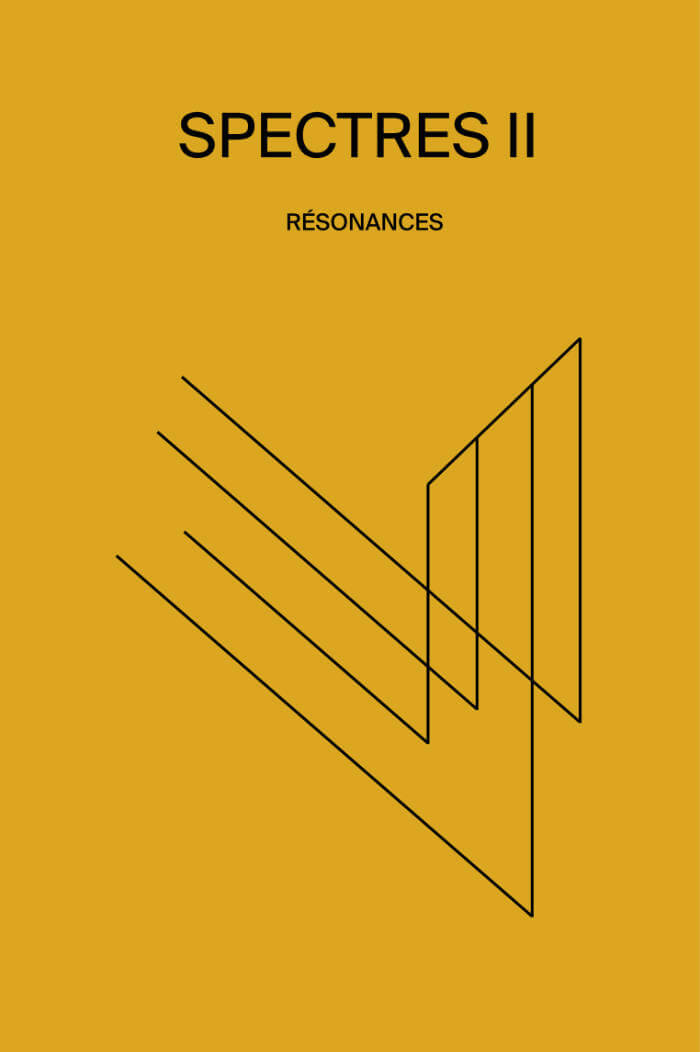
Spectres #02 – Resonances
Bartolomé Sanson, François Bonnet
The second issue of Spectres is devoted to the concept of resonances, with contributions by Maryanne Amacher, Chris Corsano, Ellen Fullman, Christina Kubisch, Okkyung Lee, Pali Meursault, Jean-Luc Nancy, David Rosenboom, Tomoko Sauvage, The Caretaker, David Toop, and Christian Zanési.
To resonate: re-sonare. To sound again—with the immediate implication of a doubling. Sound and its double: sent back to us, reflected by surfaces, diffracted by edges and corners. Sound amplified, swathed in an acoustics that transforms it. Sound enhanced by its passing through a certain site, a certain milieu. Sound propagated, reaching out into the distance. But to resonate is also to vibrate with sound, in unison, in synchronous oscillation. To marry with its shape, amplifying a common destiny. To join forces with it. And then again, to resonate is to remember, to evoke the past and to bring it back. Or to plunge into the spectrum of sound, to shape it around a certain frequency, to bring out sonic or electric peaks from the becoming of signals.

Reality (Dark) Fragments (Light)
This monograph covers more than fifty years of creation by Art & Language, whose artists are at the origin of conceptual art. Through unpublished texts by Matthew Jesse Jackson and Art & Language, a transcript of their opera libretto Victorine, and an interview with the artist collective, this publication questions their journey, and more broadly, the relationship between contemporary art and conceptual art.
The permanent collection of the Château de Montsoreau – Museum of Contemporary Art has grown to include 800 works from Art & Language. To celebrate this event, the museum produced a major exhibition and a publication titled Reality (Dark) Fragments (Light). The monograph and exhibition look back at 50 years of creation by these critical, provocative, subversive, punk art collective. They question the main issues involved in Art & Language's work: conversation as an artwork, description, transdiciplinarity, crisis in the relationship between the artist, the museum and the art gallery.
Edited by Marie-Caroline Chaudruc.
Foreword by Marie-Caroline Chaudruc.
Text by Matthew Jesse Jackson, interview with Art & Language by Victorine Meurent.

Traces of Dance
Traces of Dance brings together scores, drawings, sketches, notes, graphics and paintings, which contributes to define a textuality of movement between writing and image.
The drawings and notations of choreographers rarely come before the public eye; and yet they are far more than simple memory aids. Several types of speech and writing have been called upon to lead the viewer's perception through the traces that the dancing body lays down. While these texts are not all concerned with the specific practices of dance, they all deal with the most profound contribution that a knowledge of the moving body brings to our culture, to our lives.
With Georges Appaix, Dominique Bagouet, Trisha Brown, Lucinda Childs, Régine Chopinot, Merce Cunningham, Philippe Decouflé, Raoul-Auger Feuillet, Roxane Huilmand, Isaac, Anne Teresa De Keersmaeker, Rudolf Laban, Daniel Larrieu, Jean-Marc Matos, Dana Reitz, Hervé Robbe, Kellon Tomlinson, Mary Wigman, André Lorin, Vaslav Nijinski, Louis-Guillaume Pécour, Pierre Rameau, Bob Wilson.
Texts by Daniel Dobbels, Jean-Noel Laurenti, Laurence Louppe, Valérie Preston-Dunlop, René Thom, Paul Virilio.
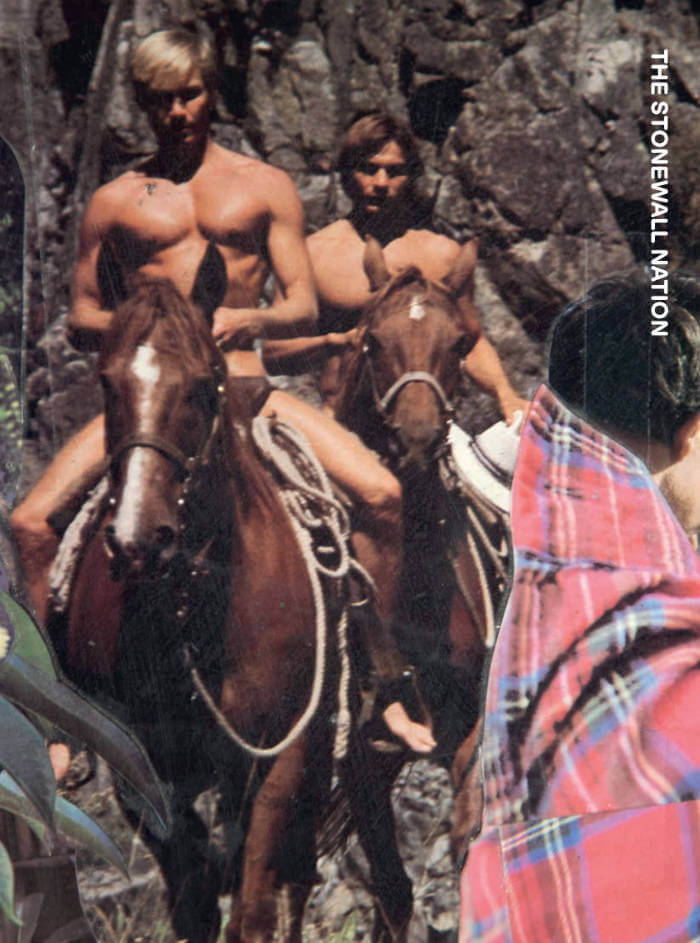
The Stonewall Nation
Edited by artist Sille Storihl, The Stonewall Nation engages the archival remains of a gay colony that a group of gay men wanted to establish in Alpine County in Northern California in the early 1970s.
The Stonewall Nation was to be a place where gay people could be free from all oppression—a city "suitable for the Gay life-style and culture." This liberation project, however, was ultimately shaped as a project of settler-colonialism: the Stonewall Nation was to be erected on Indigenous lands, the territory of the Wá∙šiw (Washoe) people. The colony was never realized, and the Stonewall Nation now lives on only in the archives.
Artist Sille Storihle first came across the story of the Stonewall Nation during a visit to the ONE National Gay & Lesbian Archives in Los Angles more than a decade ago. In 2014, they made an experimental short film about the project, which has now been extended into a publication that shares materials from Storihle's artistic process as well as the ONE Archives. Produced in connection with the Norwegian Queer Culture Year 2022, The Stonewall Nation presents archival documents, artworks and a conversation between Storihle and former ONE Archive curator David Evans Frantz, engaging and exposing marginalized histories, the "thorns" in LGBTQ history and the dirtiness of the archive.
Sille Storihle is an artist and educator based in Oslo, working primarily with moving images and printed matter. Their artistic practice encompasses a body of work in dialogue with queer archives and pasts, exploring relationships between power and performativity. From 2012 to 2020, Storihle ran the queer-feminist platform FRANK together with Liv Bugge. The platform originated as a salon, which developed into a wide range of projects in different locations with various co-curators.

Birthday
Bridget Mullen is the ruler of an unruly roost. Between 2021 and 2023, she gave birth to forty-seven paintings, each twelve-by-nine inches: kin ugly and cute, monstrous, fleshy, repulsive, droopy-eyed, and sneering as they cross the universal threshold into the no less frightening world that awaits. Birthday reunites Mullen's uncanny litter alongside a conversation between the artist and Lucas Blalock.
The paintings in New York-based artist Bridget Mullen's Birthday series utilize two distinct parameters to guide the creation of the iterative works: a vertical orientation at an intimate scale of 12 x 9 inches and a visualization of perhaps the ultimate creative act—the moment of birth. Through this consistent scale and thematic hyper focus, the artist employs endless formal variations in composition, color, and paint application. The result is a series of paintings that share a common structure yet champion individuality.
Contrasting colors provoke a visible tension, one that is at times compressed and, in other moments, elastic. Suddenly, abstract shapes come into focus as human anatomies, capable of expressing emotion. Undulating lines of various thicknesses and layered colors squeeze together, revealing peculiar faces and gestures that emerge from a central point. The repetition of thin lines creates a visual stutter of pigment, alluding to the passage of time or rapid movement.
The works in Birthday build on Mullen's practice, combining color, decisive mark-making, intuition, and experimentation to conjure psychedelic configurations. Sculptural dimensionality and flatness, representation and abstraction, and solidity and fluidity, serve not as dichotomies within these works, but as two complementary halves of a whole. Together, the forms and figures of the Birthday series are imbued with a sense of life, pregnant with agency and potential.
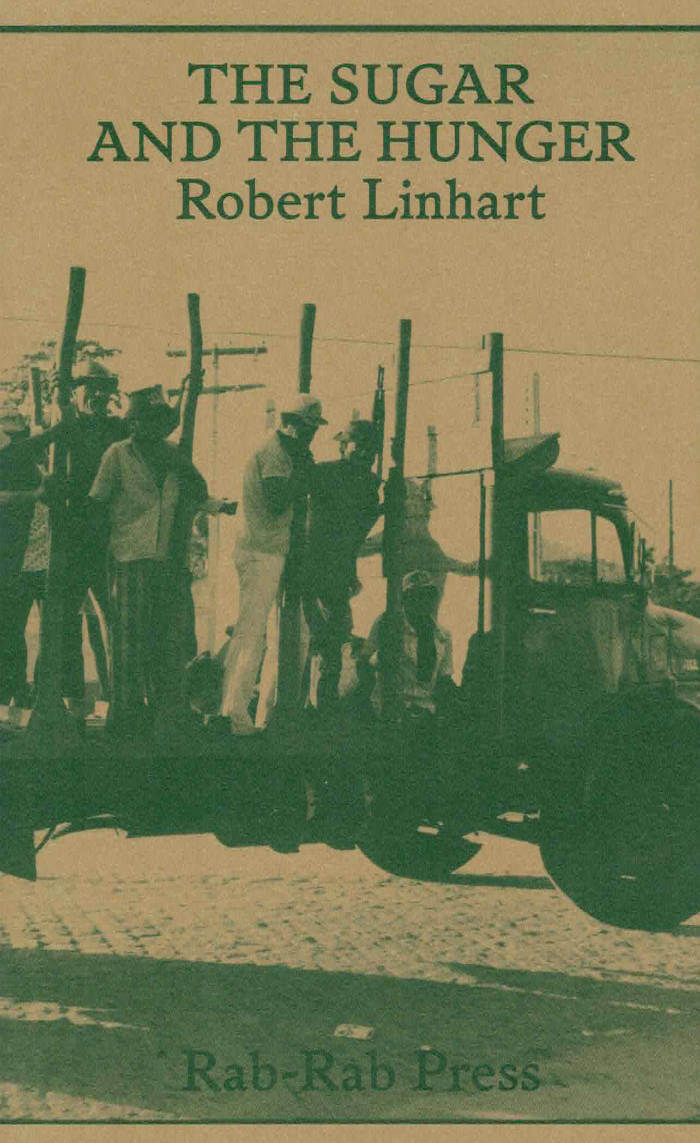
The Sugar and the Hunger
The first English language translation of Robert Linhart's The Sugar and the Hunger, originally published in 1980. Includes afterword by Luiz Renato Martins, and other materials.
Widely acclaimed for his engaged social analyses of proletariat and peasant struggles around the world, Linhart's inquiry into the sugar regions of North-Eastern Brazil, juxtaposes heterogeneous traits of the impoverished workers' stories into a vivid cinematic montage.
Alongside the translation, the book also includes 'The Third World, Investigations, Social Analysis', an unpublished interview with Linhart from 1980 made by Jean Copans, giving an insight into the political and theoretical background of his investigation in Brazil.
The afterword by Luiz Renato Martins, an active Brazilian Marxist art historian and journalist, further contextualises the importance of Linhart's book. Renato Martins who recently directed a documentary film Conversations With Robert Linhart discusses The Sugar and the Hunger against the backdrop of today's world where the practices of expropriation of land and food from peasants and urban poor, which Linhart examined in 1980 on a laboratory-like scale, have now become common global practices, endlessly producing legions of uprooted and hungry refugees.
Translated by John M Floyd and Emilio Sauri, the book includes rare photographs taken by François Manceaux in Northeastern Brazil in 1979.
Robert Linhart (born 1944 in Ixelles) is a French sociologist, philosopher and political activist, known as one of the founders of the Maoist movement in France, most famously for his 1978 autobiographic book L'Établi.

Bad Infinity – Selected Writings
The most significant critical, theoretical, and art historical texts by the artist, writer, and filmmaker Aria Dean.
Compiled here for the first time, the selected writings of Aria Dean mount a trenchant critique of representational systems. A visual artist and filmmaker, Dean has also emerged as one of the leading critical voices of her generation, through a body of writing that maps the forces of aesthetic theory, image regimes, and visibility onto questions of race and power. Dean's work across media has long been defined by what she calls a "fixation on the subject and its borders," and the texts collected here filter that inquiry through digital networks, art history, and Black radical thought. Equally at home discussing artists who embrace difficulty—from Robert Morris to David Hammons, Lorna Simpson, and Ulysses Jenkins—and conceptual frameworks such as Afropessimism, Dean often contends with how theoretical positions brush against the grain of lived reality: how the Structuralism handed down from the academy, for instance, can be co-mingled with critiques of structural racism, or how Georges Bataille's notion of base matter transforms through an encounter with Blackness.
Dean's thinking embraces a definition of "Black art that luxuriates in its outside-the-world-ness," as she writes in this volume, which works to elucidate "Blackness's proclivity for making and unmaking its own rules as it produces objects" of cultural necessity. Originally published in November as well as in Texte zur Kunst, e-flux journal, and in exhibition contexts, the essays compiled in Bad Infinity were written over a six-year span that charts our rapidly evolving forms of subjectivity and sociality.
Aria Dean (born 1993 in Los Angeles ) is an American artist, critic, writer and curator. Her writings have appeared in various art publications including November (of which she is a founding editor), Texte zur Kunst, Artforum, e-flux, The New Inquiry, Art in America, Topical Cream, Cura., Mousse, Flash Art, Spike, etc.

Gossiping is Not (Just) Bitching (English edition)
Writing and design of a publication documenting the script Gossiping is Not (Just) Bitching. The design deliberately uses different typefaces to formally identify the multiple voices woven in the performance.
21 × 14.85 cm, 16 p, laser printed
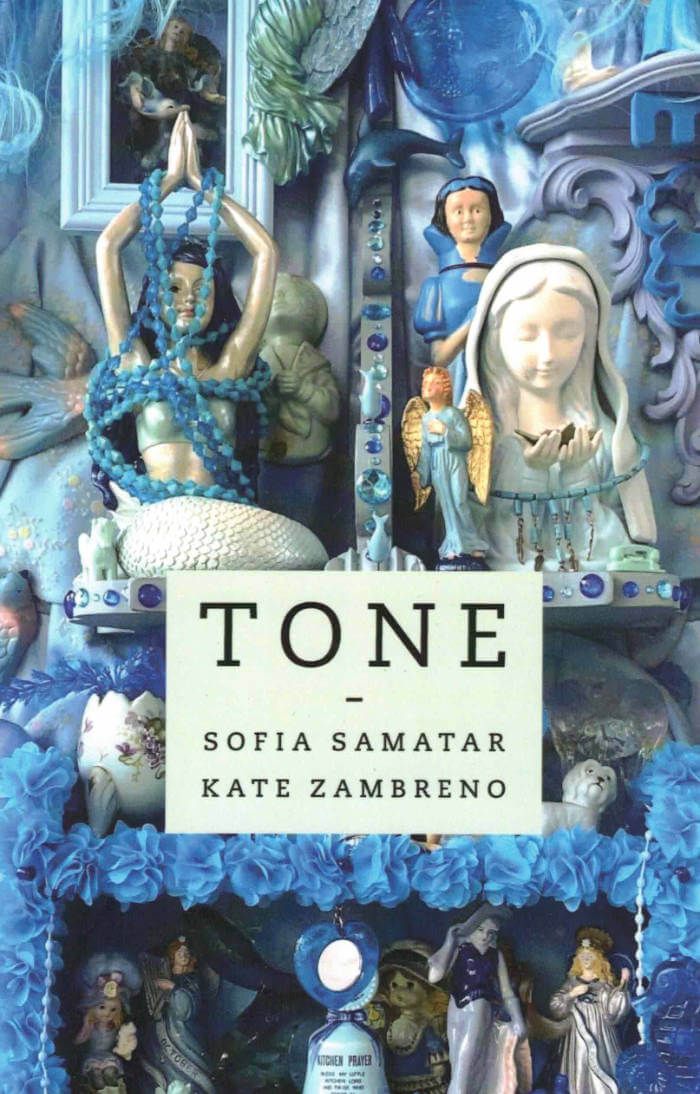
Tone
Tone is a collaborative study of literary tone, exploring its implications for community, politics, and ecology.
Both granular and global, infusing a text with feeling, tone is so difficult to pin down that responses to it often take the vague form of "I know it when I see it." In Tone, a cooperative authorial voice under the name of the Committee to Investigate Atmosphere begins from the premise that tone is relational, belonging to shared experience rather than a single author, and should be approached through a communal practice. In partnership, the Committee explores the atmospheres emanating from texts by Nella Larsen, W. G. Sebald, Heike Geissler, Hiroko Oyamada, Mieko Kanai, Bhanu Kapil, Franz Kafka, Renee Gladman, and others, attending to the chafing of political irritation, the hunger of precarious and temporary work, and the lonely delights of urban and suburban walks.
This study treats a variety of questions: How is tone filtered through translation? Can a text hold the feelings that pass between humans and animals? What can attention to literary tone reveal about shared spaces such as factories, universities, and streets and the clashes and connections that happen there? Searching and conversational, Tone seeks immersion in literary affect to convey the experience of reading-and living-together.
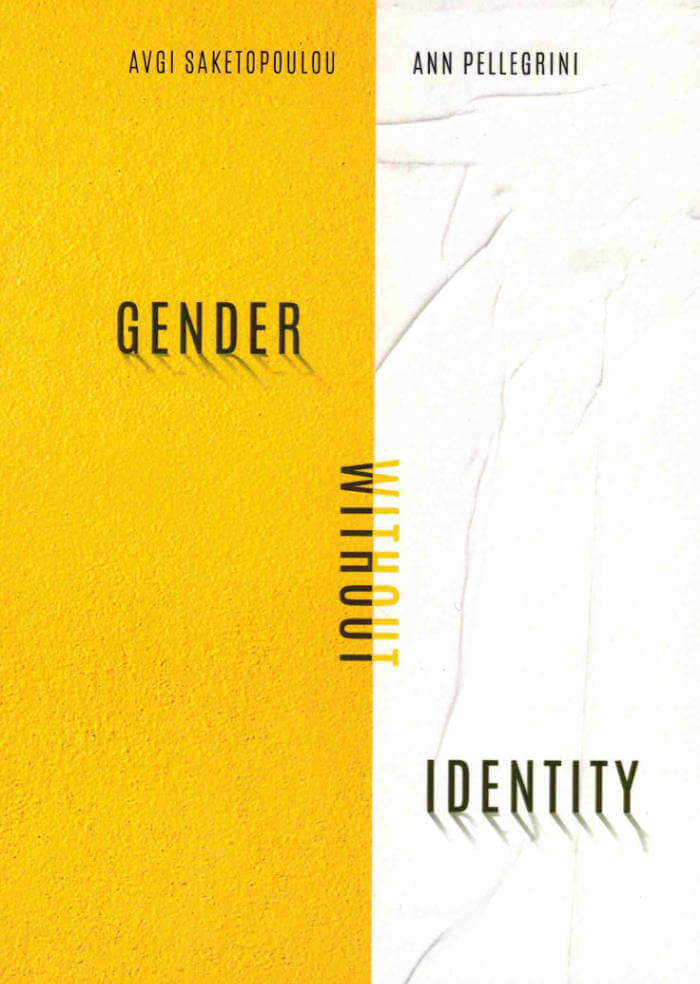
Gender Without Identity
Avgi Saketopoulou, Ann Pellegrini
Gender Without Identity offers an innovative and at times unsettling theory of gender formation. Rooted in the metapsychology of Jean Laplanche and in conversation with bold work in queer and trans studies, Avgi Saketopoulou and Ann Pellegrini jettison "core gender identity" to propose, instead, that gender is something all subjects acquire — and that trauma sometimes has a share in that acquisition. Conceptualizing trauma alongside diverse genders and sexualities is thus not about invalidating transness and queerness, but about illuminating their textures to enable their flourishing.
Written for readers both in and outside psychoanalysis, Gender Without Identity argues for the ethical urgency of recognizing that wounding experiences and traumatic legacies may be spun into gender. Such "spinning" involves self-theorizations that do not proceed from a centered self, but are nevertheless critical to psychic autonomy. Saketopoulou and Pellegrini draw on these ideas to offer clinical resources for working with gender complexity and for complexifying (what is seen as) gender normativity.
Avgi Saketopoulou is a psychoanalyst in private practice in NYC, and a member of the faculty at New York University's Postdoctoral Program in Psychotherapy and Psychoanalysis. She is the author of Sexuality Beyond Consent: Risk, Race, Traumatophilia from the Sexual Cultures Series, NYU Press.
Ann Pellegrini is Professor of Performance Studies & Social and Cultural Analysis at New York University, and a practicing psychoanalyst. Their books include Performance Anxieties: Staging Psychoanalysis, Staging Race and Love the Sin: Sexual Regulation and the Limits of Religious Tolerance (coauthored with Janet R. Jakobsen).

Chantal Akerman: Afterlives
Focusing on Akerman's works of the last two decades, a period during which she diversified her creative practice, this collection traces her artistic trajectory across different media.
From her documentaries 'bordering on fiction' to her final installation, NOW, the volume elucidates the thematic and aesthetic concerns of the later works, placing particular emphasis on self-portraiture, the exploration of intimacy, and the treatment of trauma, memory and exile. It also attends to the aural and visual textures that underpin her art. Drawing on a wide range of theoretical approaches as well as engaging more creatively with Akerman's work, the essays provide a new optic for understanding this deeply personal, prescient oeuvre.

Oral History of Exhibitions
Of course there is the practice of art by the artist, but an exhibition is even more so an engagement between people, places, institutions, projections, desires, coincidences, memories, and temporalities. In this monograph, artist Megan Francis Sullivan chooses the format of oral history, engaging various akteurs of the field to produce a web of language reflecting a shape of time.
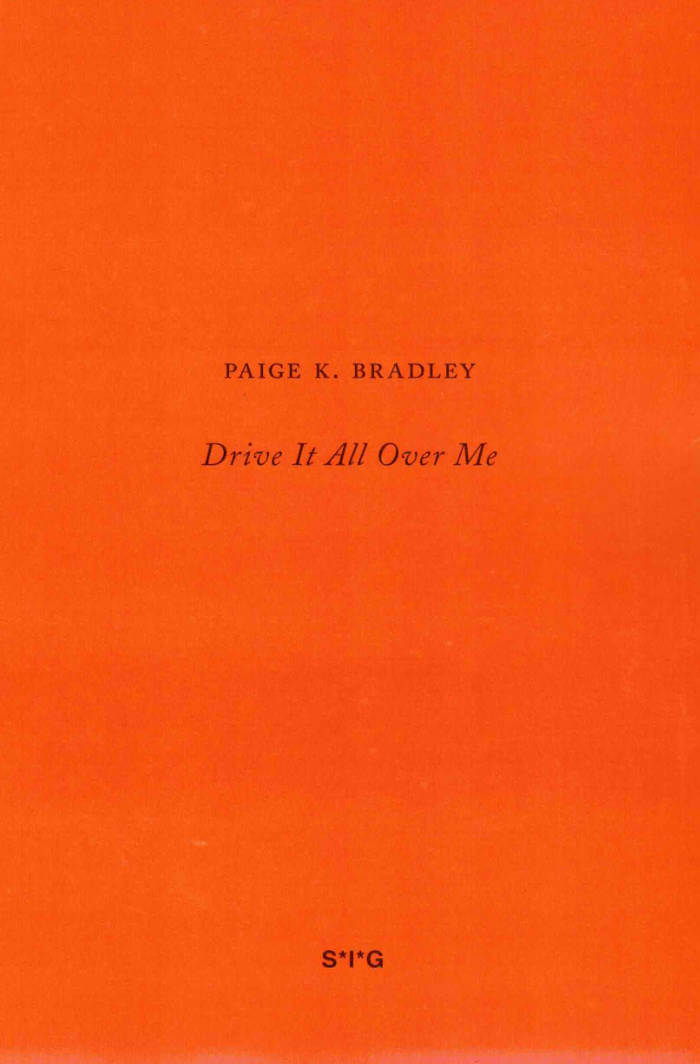
Drive It All Over Me
Paige Bradley’s Drive It All Over Me was commissioned by the artists Jay Chung and Q Takeki Maeda and concerns their work Bad Driver, 2023, Jack Goldstein’s Selected Writings, and Vanessa Place’s Gone with the Wind and concerns broad themes of subtextual narrative, authorship, and identity in text-based visual artworks while also touching upon allegory, elaborately subtle jokes, and writing as a sculptural material.

From Work to Frame, or, Is There Life After "The Death of the Author"?
"From Work to Frame" was first published in English and Swedish in 1987 in a catalog of the Moderna Museet in Stockholm for the exhibition "Implosion: A Postmodern Perspective" (October 24, 1987 to January 10, 1988).
As S*I*G #12, the text is published in English and in its first German translation, alongside a preface by Hannes Loichinger, who is editor of this issue.
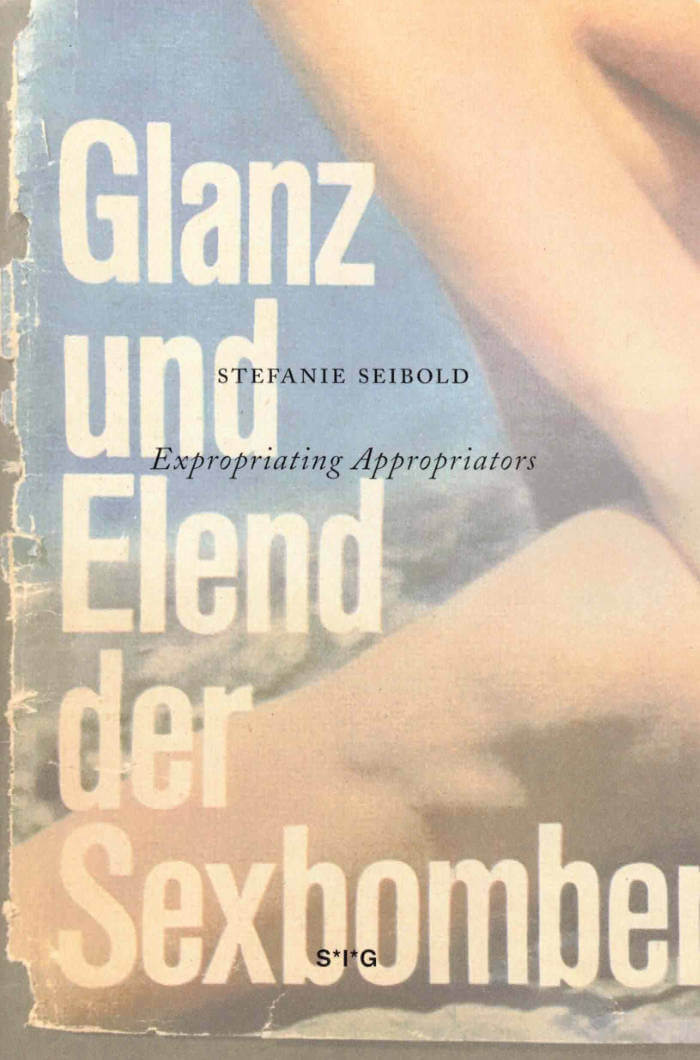
Expropriating Appropriators
An excerpt of images collected over 20 years from popular fashion magazines offers expression to the artist's queer and feminist desires.

Family Picture
An essay in the form of painting studies - including persons, dogs, a frog, a hoofed animal, fish, hare, trees and plants.

Letters from NYC
A diptych of transcribed letters, extracted from two films taking place in 1970s New York, made by Jacques Scandelari and Chantal Akerman.
